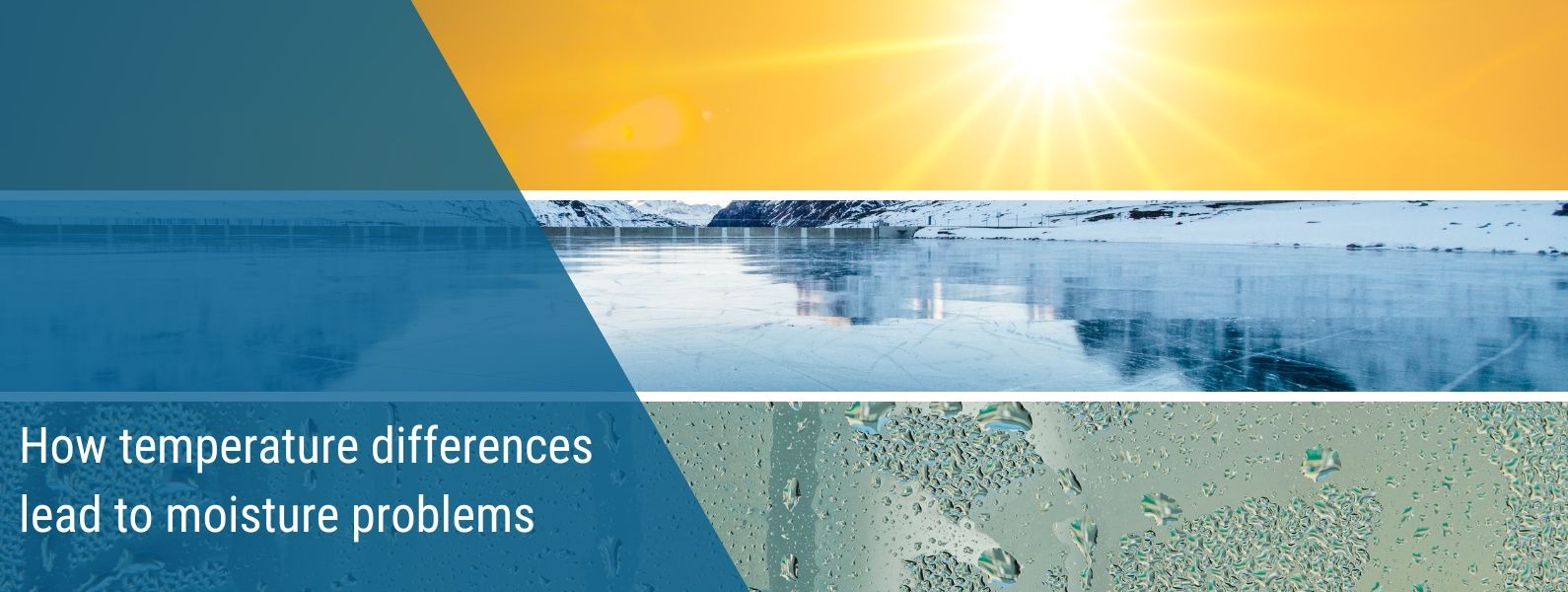How temperature differences lead to moisture problems
- Posted on
- By Praxas
- Posted in Condensation problems, Desiccants, freight transport, Moisture Control, Shipping environment
- 0

Today it is a pleasant 22 degrees in the Netherlands, but for next week they expect a cold front from the North Pole, which could cause temperatures to drop below freezing. Large temperature differences can lead to moisture problems. How? You can read that below.
Condensation
Condensation is the process by which water vapor cools the air and turns into liquid water when it comes into contact with a cold surface. This can happen anywhere where there are temperature differences, but it is especially noticeable in environments with varying climates, such as at sea.
Freight transport by sea
When transporting goods, maintaining optimal conditions is essential to ensure the quality of products. When temperatures fluctuate a lot, such as during sea transport, it is a major challenge to prevent condensation.
For goods sensitive to moisture, such as electronics, food, pharmaceuticals and other fragile cargoes, condensation can lead to serious damage. Products may become less usable or even unusable at all, leading to financial losses and reputational damage for transportation companies.
Fortunately, there are effective solutions available to tackle these moisture problems.
Desiccants
Praxas has various desiccants in its range that are specially designed to absorb moisture from the air and thus reduce humidity. By strategically placing desiccants, carriers can reduce the risks of condensation and maintain the quality of their loads.
How many desiccants are needed depends on what you are transporting; are products hygroscopic? Is a wooden pallet used and is it properly dry? How moist is the container in which the products will be placed?
Container Liner Plus
If you want to be assured of a dry load, you can use the Praxas Container Liner Plus. This is a Container Liner with a bottom that creates an airtight insulating layer in your container. Desiccants and data loggers are also supplied.
It has been proven that the dew point is not reached, which means that products are guaranteed to arrive dry on the other side of the ocean.
Conclusion
Whether it concerns the transport of electronics or pharmaceutical products, understanding the impact of temperature differences and taking preventive measures is crucial for successful freight transport.
So as temperatures continue to fluctuate and the challenges of condensation remain, Praxas solutions can be valuable in the quest for a drier and safer transportation environment.
For PDF click here


Comments
Be the first to comment...